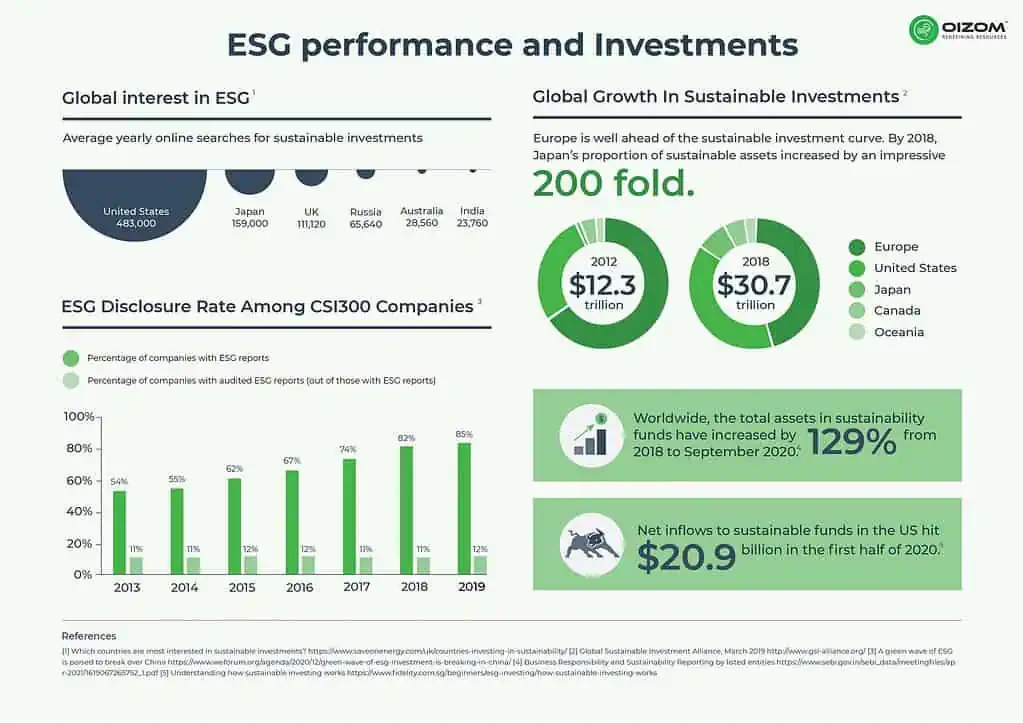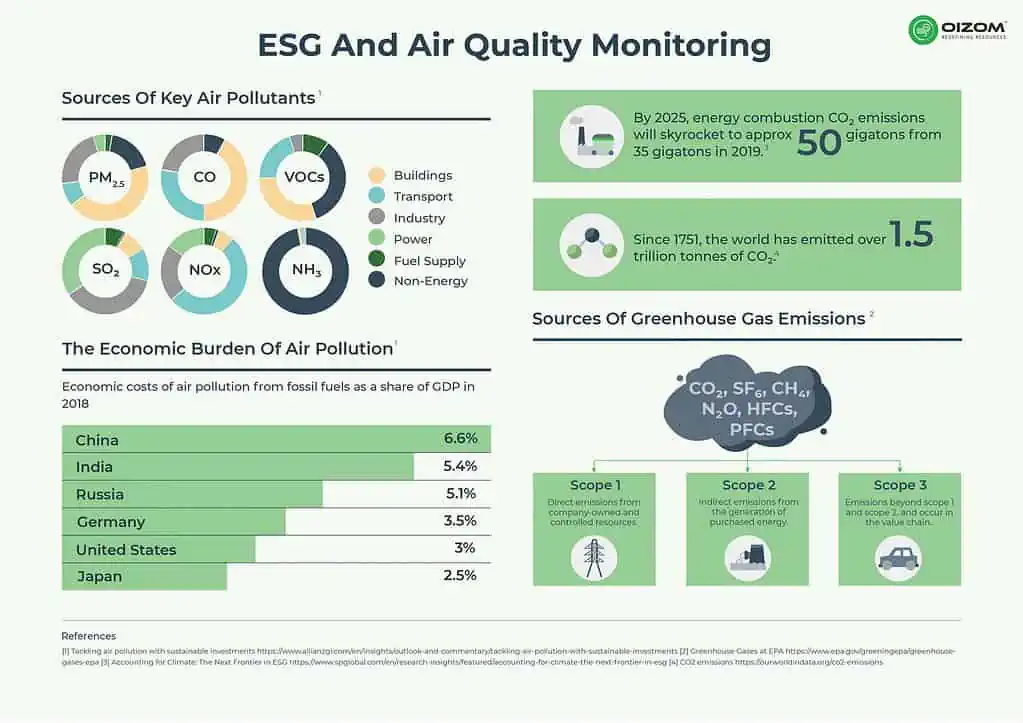Estimated reading time: 7 minutes
Impact of Air Quality Monitoring on ESG
Have you ever wondered why some of the richest people on earth pay huge importance to ESG?
The internet took two sides the day Elon Musk tweeted about why he thinks ESG ranking is questionable. On the other hand, many of world leaders have put out a number of efforts to make companies responsible for their impact on the environment. At the very end of it, there is one thing we know for sure, that it plays a major role in our current ecosystem.
So, what do you have to do if you want to have a good ESG score for your organization? And, How does having an Air Quality monitor help you with it? Read more to find out.
What does ESG mean?
ESG is short for Environmental, Social, and Governance. These factors are used to evaluate or measure an organization’s or a country’s advancements with sustainability.
Environmental factor play an important role in evaluating an organization’s performance in ESG. This is because the actions taken by it could directly affect the environment. It could be about recycling, wastewater management, Greenhouse gas emissions, etc.
Social factors include steps taken towards human rights, etc. This factor majorly influences the workers’ safety and health.
Governance factors generally include the steps taken by the organization that is in line with the laws or policies of the government.
This blog focuses more on the “Environment” aspect of ESG. In addition to this, we will also discuss how monitoring Air quality is relevant and beneficial to a company’s ESG score. Read more to find out.
How is ESG related to monitoring air quality?
ESG has a direct hand in influencing investment opportunities and the brand image of itself. Many investors look for a good ESG score in a company to determine if they want to invest in it. There are a number of reasons why performing well in ESG matters a lot to investors. One of them is for the company to have a Sustainable structure that causes minimal harm to our ecosystem.
Now that we know what ESG means, let us dissect the connection between monitoring Air Quality and scoring well in ESG. As discussed previously, the first factor in ESG is “Environment”. This factor includes a number of aspects that relate to air pollution, climate change, wastewater management, toxic emissions, electronic waste, etc.
“Environment” plays a major impact because it directly impacts our ecosystem. This is why people are more inclined to invest time or money into organizations that promise a good ESG performance. To improve the ESG score, the scope of monitoring Air Quality monitors can play a vital role. It helps them get actionable air quality data insights for better decision-making.

What are the various emissions to monitor?
In order to hit the mark on the “Environment” factor of ESG, monitoring Air Quality becomes crucial to the task. It is important to know that an organization might be responsible for direct and indirect forms of air pollution. For example, if you own a paper company, you will have to consider the numerous forms of air pollution. These include air pollution not only from the production unit but from the transportation and other factors as well. Like, the emissions caused from raw materials, its usage, and after its usage. Read more to find out.
This is why, it is essential for an organisation to be aware of its contribution to the greenhouse and other emissions into the air. In fact, such emissions are categorised into 3 stages or scopes by the Greenhouse Gas (GHG) Protocol.
Scope 1
These emissions are direct emissions from company-owned and controlled resources. In other words, these are the emissions released into the world which are from the production level in a factory, facility, etc. For example, if you are a meat industry, the emissions caused by skinning, cutting and maintenance of living animals would count under this scope.
Scope 2
These are indirect emissions from the generation of purchased energy from a utility provider. In other words, all GHG emissions are released into the atmosphere, from the consumption of purchased electricity, steam, heat and cooling. They may not be from the product in itself, but from the process of making, and distributing it.
Scope 3
These are the air pollutants that are caused beyond Scope 1 and Scope 2. These occur in the value chain of the company, which includes both upstream and downstream emissions. This includes the emissions that are caused by the lifecycle of the company’s end products or of its usage of them. For example, if you are a company that produces clothes, the emissions caused by the customers ironing the shirt after buying, or washing it, and disposing of it shall also be considered.

How does real-time Air Quality Data help you towards your ESG goals?
Economic Benefits
As discussed previously, performing well in ESG can improve the brand image of the company. Monitoring Air Quality is one such tool that can help the company showcase its pollution emissions in and around the company facility. It also projects the company as a responsible body in terms of its impact on the environment and the health and safety of its workers. This benefits the company in plenty of ways because it builds the confidence of the people in the company or the government. All of these factors help improve the sustainable outlook of the company and boost its investment opportunities.
Better Decision making
Air Quality monitors help authorities in reducing harmful emissions. It plays a major role in ensuring people’s safety and security. It provides timely data and reports of various gaseous substances, particulate matter, and other air pollutants. In some cases, it can even guide them in understanding the source of the emissions. This is why Air Quality monitors act as a tool for employees to make a better and more informed decision. In a way, it acts like a lighthouse towards saving the environment and helping people live better.
Building awareness
the current era, information, and data are precious. The data collected from the Air quality monitors are useful in a number of ways. For which, improving ESG performance is one of them. In that case, the data can help various environmental research activities that benefit the people. Similarly, it can be used as a tool to ensure the institution’s compliance to Air Quality norms as well.
A tool to help improve the environment
In a way, Air Quality Monitors act as a lighthouse for understanding the air we breathe. It helps us live with better air conditions because of its capabilities of producing timely reports. Similarly, it can also notify if and when the air pollution gets to a dangerous state, and immediate actions can be taken to mitigate it.
Bridging the gap
Oizom has a range of environmental monitors. Each of them are designed to accommodate the various applications where monitoring air pollution is crucial. Through our real-time air quality measurement devices, we monitor various environmental parameters such as air quality, polluting gases, odourful and toxic gases, noise, weather conditions, radiation, etc. Later, the collected data can be visualized and analyzed for effective data-driven decision-making on the Oizom Data Platform.
Some of Oizom’s Air Quality Monitoring Solutions include the following:
Polludrone®: The Polludrone is a useful tool to measure all major ambient parameters. Some of these are PM1, PM2.5, PM10, PM100, Carbon Monoxide (CO), Carbon Dioxide (CO2), Sulfur Dioxide (SO2), Nitrogen Dioxide (NO2), Ozone (O3), Hydrogen Sulfide (H2S), Ambient Noise, Light, UV, Temperature, and Humidity. Furthermore, Polludrone uses our patented e-breathing sampling technology that offers higher accuracy and near-reference data. Hence, by creating a dense network of data points, the Polludrone is powered to generate hyperlocal pollution data.
AQBotTM: AQBot. This Series offers a wide range of air quality parameters to choose from. The product range consists of critical ambient parameters and toxic gases like Total Volatile Organic Compounds (TVOC), Ammonia (NH3), Hydrogen sulfide (H2S), Methane (CH4), Carbon Monoxide (CO), Formaldehyde (CH2O), Particulate Matter (PM1, PM2.5, PM10, PM100), Ambient Noise, etc. The AQBot series is further designed for easy operation to suit multiple applications in the industry.
In addition to these, there are several other monitors that are helpful in monitoring air on a real-time basis. Click here to know more.






